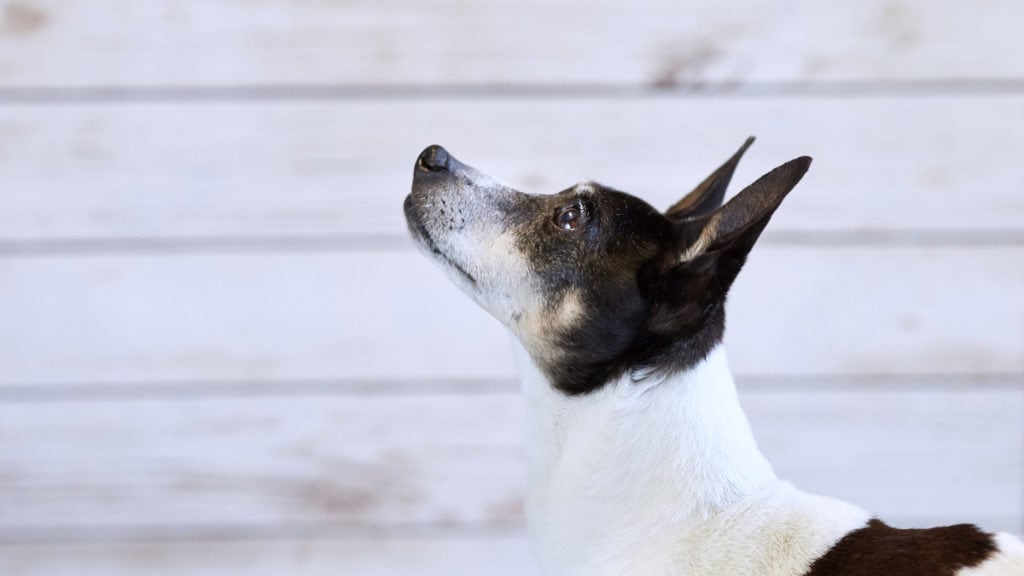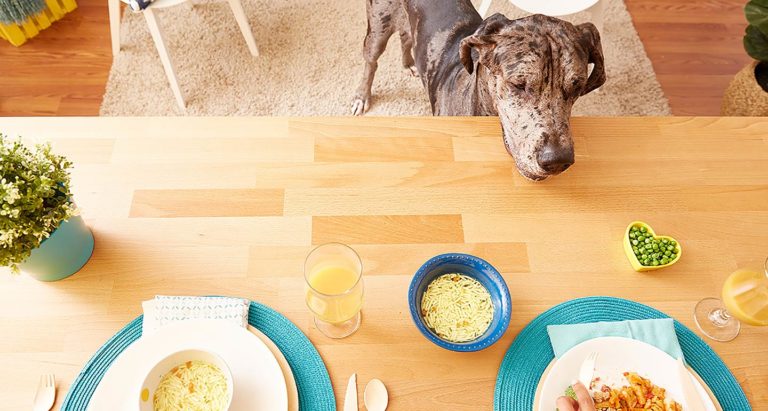A cat or dog with allergies or other sensitivities may need a special diet to keep him healthy and frisky—and sometimes this means trying grain-free dog food. But if you subtract wheat and corn from his food, what should be on the ingredient list? “Many pets are allergic to wheat and other grains, so a lot of grain-free pet foods use other carbohydrate sources similar to those in prescription hypoallergenic diets,” explains Dr. Stephanie Liff, DVM, medical director of Pure Paws Veterinary Care in New York City. Here’s why grain-free pet food might be a smart option for your sweet dog or cat and what to look for in his no-grain pet food:
Watch for symptoms.
A grain-free diet might be best for your pet if you notice any of the following: itching, hair loss, red patches on the skin, sores or hot spots. A grain-fee food trial is the next logical step to determine whether the new kibble makes a difference. “If you have a pet who is allergic or sensitive, he will often be less itchy and have less stomach upset when eating a hypoallergenic diet—and these are usually grain-free,” says Dr. Liff. Wellness CORE Grain-Free Original Formula Dry Dog Food might be one to sample, as it contains gut-friendly probiotics and healthy antioxidants. If you make the decision to cut grains from your dog’s diet, remember to also swap out his treats for grain-free dog treats.
Read the labels.
Grains are carbohydrates, but when they’re taken out of pet food, look for another source. “Carbohydrates are part of a balanced diet, so check to see such healthy replacements as potato, peas or pumpkin,” recommends Dr. Liff. Taste of the Wild Rocky Mountain Dry Cat Food is a yummy choice that includes protein from venison and salmon plus peas and sweet potatoes for energy. Keep in mind that when grain is removed, sometimes the total fiber content of the food suffers. Dr. Liff likes to offer her furry friends canned pumpkin or psyllium as fiber supplements.
More protein.
Pet owners may want to consider grain-free dog food because it more closely resembles the kind of diet pets used to consume in the wild. Cats and dogs evolved eating more protein than carbohydrates and may enjoy better digestive health on protein-rich food. Plus, grain-free pet chows tend to be of higher quality than their corn- and wheat-laden counterparts. Your feline might like Merrick Purrfect Bistro Grain-Free Real Chicken Recipe Adult Dry Cat Food, which is packed with high-quality protein, including poultry, eggs, wild-caught fish and savory liver.
Watch out for table scraps.
Of course you want to indulge your pet, but offering him the ice cream bowl or a bit of scrambled egg might not mix with his new diet. When transitioning to a grain-free plan, be strict with treats of all kinds, including those from your own table. “If your pet is truly food allergic, the less alternative food he’s offered, the better it is for his health,” notes Dr. Liff. This is because many ingredients can cross-react and elicit an allergic response (for example, an animal who’s allergic to chicken should not eat turkey). Special grain-free dog treats are a great alternative when transitioning to a no-grain diet. If you’re looking for a no-grain food that features fish as the main protein, you can try American Journey Salmon & Sweet Potato Recipe Grain-Free Dry Dog Food.
Get help from a pro.
Always consult with your pet’s veterinarian before making a switch in food. Your dog’s or cat’s health care provider can suggest brands to try as well as ways to slowly test new foods or grain-free dog treats. If you find that after trying no-grain dog food or cat food options your pet is still showing signs of an allergy, speak with your vet about other testing to determine the cause.
More to Explore
Share:













